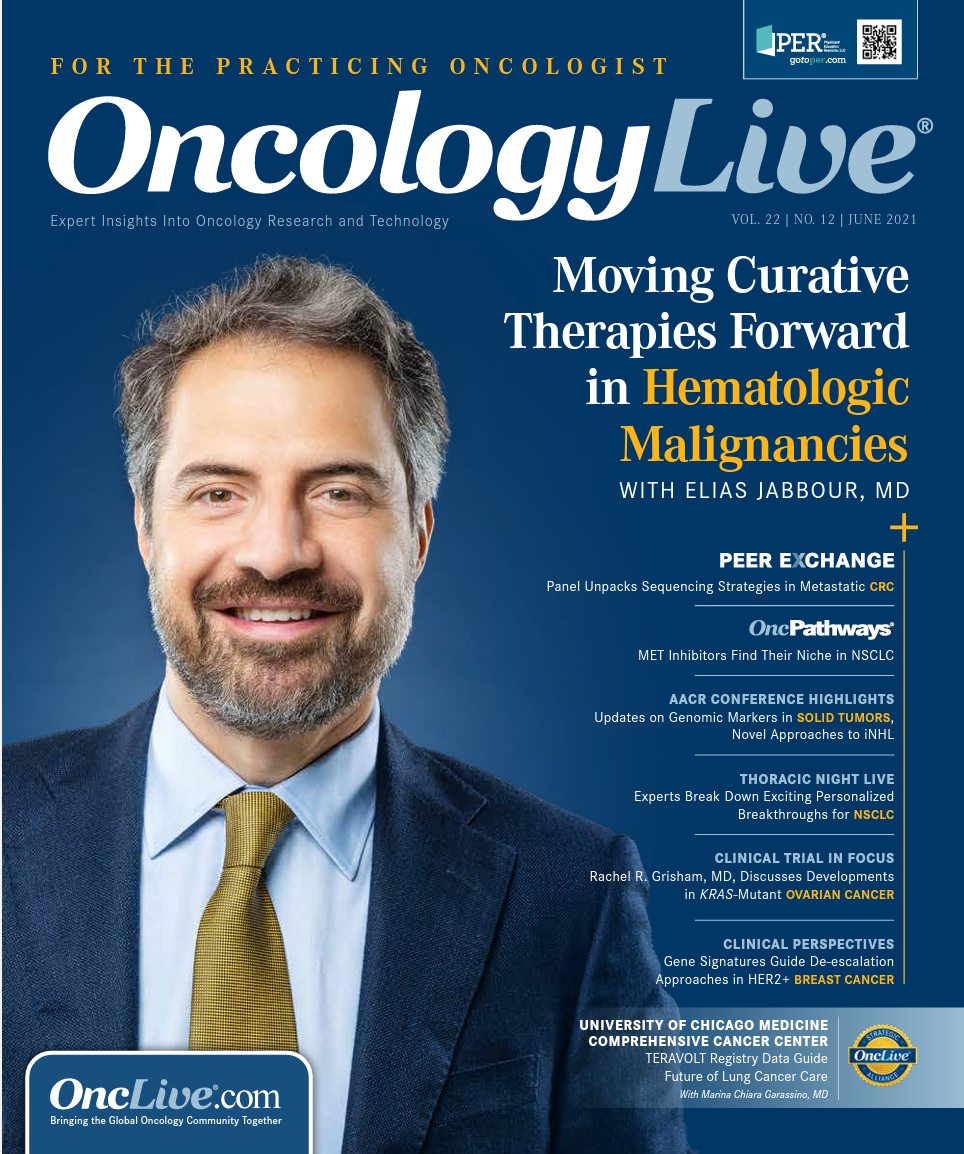Isatuximab Combination Looks to Improve Outcomes for Early Relapsed Multiple Myeloma
Thomas G. Martin, MD, speaks to the FDA approval of isatuximab, carfilzomib, and dexamethasone, and potential future directors for isatuximab.
Thomas G. Martin, MD

Combination therapies, in particular those using 3 and 4 drugs, have improved response rates and survival outcomes for patients with relapsed or refractory multiple myeloma. For patients who experience early relapse, data from the phase 3 IKEMA study (NCT03275285) supported the use of isatuximab-irfc (Sarclisa), a CD38-directed cytolytic antibody, plus carfilzomib (Kyprolis) and dexamethasone (Isa-Kd) in patients who received 1 to 3 prior lines of therapy. The FDA approved the combination for this patient population on March 31, 2021.
Specifically, Isa-Kd reduced the risk of disease progression by 45% (HR, 0.548; 95% CI, 0.366-0.822; P = .0032) compared with carfilzomib and dexamethasone (Kd) alone. The median progression-free survival (PFS) was not reached with isatuximab vs 20.27 months with Kd (95% CI, 15.77-not reached). Response rates were similar between the 2 cohorts (86.6% vs 82.9%, respectively); however, more complete responses were reported with Isa-Kd compared with Kd (39.7% vs 27.6%, respectively).
In an interview with OncLive®, Thomas G. Martin, MD, clinical professor of medicine in the Adult Leukemia and Bone Marrow Transplantation Program, associate director of the Myeloma Program, at the University of California, San Francisco, and coleader of the Cancer Immunology & Immunotherapy Program at the Helen Diller Family Comprehensive Cancer Center, spoke on the approval and potential future directions for the agent.
Please discuss the efficacy data from the IKEMA study.
We had known from a prior study [ENDEAVOR; NCT01568866], which [evaluated] Kd compared with bortezomib [Velcade] and dexamethasone, that the PFS was approximately 18 months for patients treated with Kd. In [IKEMA], the PFS for Kd was about 20 months, so [Kd] performed similarly to the ENDEAVOR study. [This shows] the control arm worked really well. In terms of the Isa-Kd arm, based on a HR of 0.548, we would expect the PFS to be around 30 months. That’s a very impressive PFS for a triplet therapy in relapsed or refractory multiple myeloma. In addition, the ORRs [overall response rates] are really good. Specially focusing on CR, the rate was right around 40% [with Isa-Kd]—again, quite good.
Isatuximab can affect the evaluation for CR because it can interfere with the assay. We did mass spectrometry to look at whether or not there was some confounding of the CR assessment based on isatuximab-interference and there was. If you remove the interference, the CR rate was actually approximately 45%, which is a pretty amazing CR rate for a relapsed/refractory trial. MRD [minimal residual disease] negativity was quite impressive, too, with the MRD-negativity rate sitting at around 40% in the intention-to-treat population.
What is the mechanism of action of isatuximab?
We have seen in many presentations how the CD38 antibodies work [and know they] work through a variety of mechanisms. Probably the most potent mechanisms are ADCC [antibody-dependent cellular cytotoxicity], ADCP [antibody-dependent cellular phagocytosis], and complement-dependent cytotoxicity. Isatuximab can also bind to CD38 and induce apoptosis, and that’s without cross-linking agents.
[Based on data from] preclinical studies, isatuximab was selected because of its ability to induce apoptosis. We conducted the phase 1 study of isatuximab plus carfilzomib [NCT02332850] because in a xenograft model when we combined the 2 [drugs] we saw regression of the tumor compared with moderate suppression of growth [when studied independently]. In results from the phase 1 trial, isatuximab plus carfilzomib showed an ORR of approximately 50% in carfilzomib-refractory patients. I think that shows there is a synergy between these 2 drugs.
What should clinicians know about Isa-Kd in terms of safety?
In general, the CD38 monoclonal antibodies have been very well tolerated. For isatuximab specifically, the most prevalent adverse effect is infusion-associated reaction, which can occur with the first and, much less so, the second infusion. With the first infusion a patient may experience fever, hives, chills, etc. Approximately 20% to 30% of the time, you have to stop the infusion, give more premedications, and then reinitiate the infusion at a slower rate.
In general, almost every patient can continue their first infusion. Once they’re past their first infusion, the adverse effects are really modest. Occasionally patients will [experience] fatigue, but I honestly don’t know if it’s [Isa-Kd–related] or from the steroid premedication.
How does this approval shift the treatment paradigm?
[Typically], patients develop relapsed disease on lenalidomide maintenance. For patients on lenalidomide maintenance, as long as it’s feasible for them to come to the center to get intravenous medication, I think the Isa-Kd is a great regimen. It’s our go-to if patients relapse on lenalidomide maintenance.
[Additionally,] if they become resistant to IMiD, I think switching to a CD38 antibody plus a proteasome inhibitor makes a lot of sense.
What does the future hold for isatuximab?
One of the biggest deficits in the current approval for isatuximab is the dosing strategy. There’s a clinical trial that is ongoing that is evaluating subcutaneous administration [NCT04045795]. Investigators need to lengthen out the dosage interval because in all prior isatuximab studies the agent is administered weekly for 4 weeks and then every other week ongoing. It’s probably all right to switch to every 4 weeks. They need to publish data on the subcutaneous dosing, they need to get it FDA approved, and they need studies looking at Q4 week dosing.
The other mechanism of action that we have to remind ourselves of with CD38 antibodies is that many of the immunosuppressive cells in the microenvironment of the bone marrow actually express CD38. It is possible that isatuximab and daratumumab [Darzalex] could in fact rid the marrow of some of these immunosuppressive effects of regulatory T cells, B cells, etc. Administration of these CD38s together with bispecific antibodies may be a very potent strategy, especially in the relapsed or refractory setting.
Reference
- Sarclisa. Prescribing information. Sanofi; 2021. Accessed June 8, 2021. bit.ly/3xaBuQL




